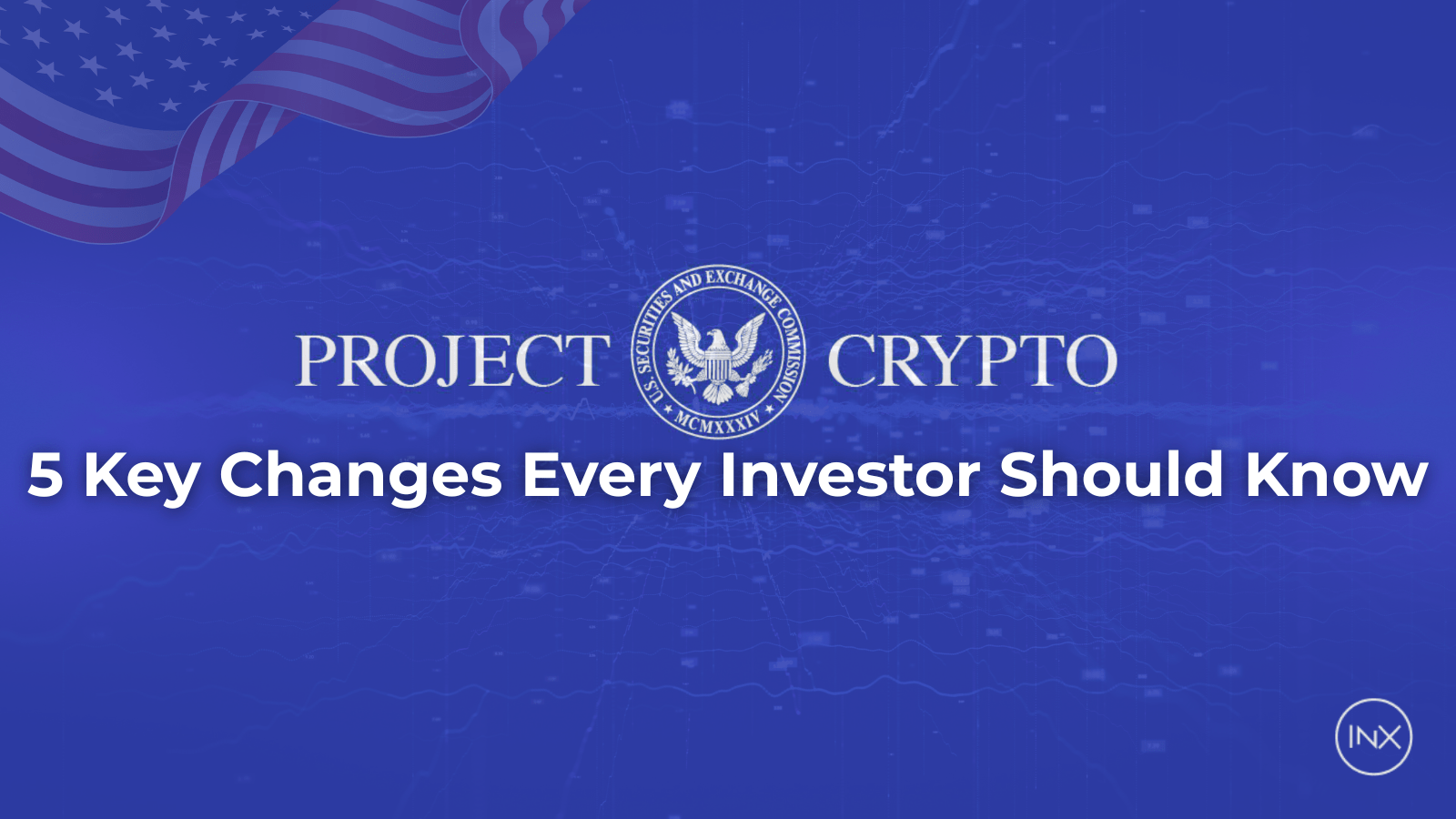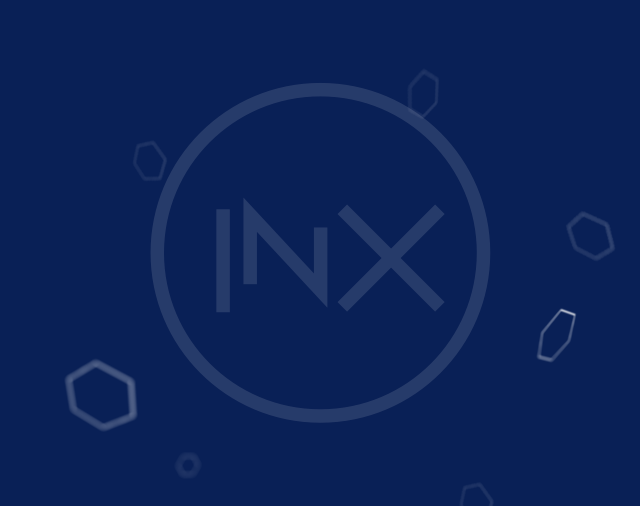The SEC has just flashed its strongest signal yet: digital assets aren’t going anywhere, and neither is the capital flooding into it.
With Project Crypto, the Commission is laying the groundwork for a compliant, regulated, and scalable crypto ecosystem in the U.S. Coming just days after President Trump signed the GENIUS Stablecoin Act into law, Project Crypto is another stop on America’s journey to becoming a digital asset powerhouse.
What is SEC’s Project Crypto?
Project Crypto is the new SEC initiative to improve the regulatory oversight of crypto in the U.S.In Atkins’ words:
“Project Crypto will be the SEC’s north star in aiding President Trump in his historic efforts to make America the crypto capital of the world.”
The initiative is a commission-wide project that will be dedicated to modernizing the securities rules regarding cryptocurrencies. This follows the recent PwG report released by the White House; Project Crypto was designed to follow the recommendations from this report.
For years, the SEC has faced criticism for its “regulation by enforcement” stance that leaves startups and institutional players uncertain about what constitutes a compliant token offering or exchange. Global frameworks like the EU’s MiCA are already operational, offering clear rules for token issuance and custody. In contrast, the U.S has fallen behind in the past few years, with a dependence on enforcement actions under the last SEC chairman.
Project Crypto represents a regulatory inflection point for the commission to develop more stable market policies for crypto in the United States.

Key Action Points of the Project Crypto
Project Crypto is a combination of several initiatives across the body to rewrite the outdated rules with more crypto-friendly laws. In this section, we give a summary of the different key points the project will cover.
- Clear Framework for Crypto Assets Distribution
The problem: The unclear regulation around security status has resulted in a fragmentation of crypto projects’ offerings in the United States. To resolve these problems, the SEC will work on creating a regulatory framework for categorizing crypto assets in the United States.
The quote: “Despite what the SEC has said in the past, most crypto assets are not securities. But confusion over the application of the “Howey test” has led some innovators to prophylactically treat all crypto assets as such.”
What it means for the investors: Project Crypto promises regulatory clarity without compromising the key ethos of the crypto space – decentralization. For investors, the initiative supports more flexible infrastructures like self-custodial wallets, access to more crypto offerings, and DeFi services like staking on regulated platforms.
Bottom line: The regulatory body is now creating guidelines to make it easy to distribute assets into other categories, e.g., digital collectibles, commodities, and stablecoins. Furthermore, crypto assets that are classified as securities will be subjected to better securities laws that make it easy for these assets to flourish in the U.S.
- Upgrading Crypto Custody
The problem: Current securities regulations create uncertainty for crypto custody, especially when it comes to self-custody and the use of decentralized wallets. Many projects face licensing inefficiencies that slow innovation and adoption.
The quote: “The right to have self-custody of one’s private property is a core American value. I believe deeply in the right to use a self-custodial digital wallet to maintain personal crypto assets and participate in on-chain activities like staking.” – SEC Chairman
What does it mean for investors: Users will be able to securely hold their crypto assets in self-custodial wallets while benefiting from a more efficient, investor-friendly licensing framework. This could increase trust, participation, and long-term holding in the crypto market.
Bottom line: As recommended by the PWG report, the SEC will now allow crypto users to have the most efficient licensing structure possible for their project. Companies that wish to custody crypto will have an easier time applying for licensing.
- Increased Crypto Offerings for Registered Platforms
The problem: ATS-licensed platforms face multiple federal and state licensing hurdles to offer non-security crypto assets, staking, and lending services.
The quote: “A broker-dealer with an alternative trading system should be able to offer trading in non-security crypto assets alongside crypto asset securities, traditional securities, and other services, like crypto asset staking and lending, without requiring fifty-plus state licenses or multiple federal licenses.”
What does it mean for investors: Regulated platforms will be able to offer a broader range of crypto products, including staking and lending, all under a streamlined licensing process. This means more choice, more convenience, and potentially lower costs for investors.
Bottom line: Expect more diverse crypto services on compliant platforms without the current red tape.
- Regulatory Flexibility for DeFi
The problem: Federal securities laws traditionally assume intermediaries are present, which doesn’t align with decentralized finance models that operate without them.
The quote: “Decentralized finance software systems, like automated market makers, facilitate automated, non-intermediated financial market activity… we should not interpose intermediaries for the sake of forcing intermediation where the markets can function without them.”
What does it mean for investors: DeFi platforms could see fewer regulatory barriers, enabling direct on-chain trading of tokenized securities and other assets without forced intermediaries. This opens the door to more transparent and efficient markets.
Bottom line: DeFi gets space to operate as intended, peer-to-peer, efficient, and innovative.
- Favorable Conditions for Crypto Projects
The problem: Innovators often face regulatory hurdles that are incompatible with their business models, discouraging entry into the US market.
The quote: “Innovators and visionaries will be able to immediately enter the market with new technologies and business models, but will not be required to comply with incompatible or burdensome prescriptive regulatory requirements… Instead, they will be able to comply with certain principles-based conditions designed to achieve the core policy aims of the federal securities laws.”
What does it mean for investors: More crypto businesses can launch in the US quickly, fostering competition, innovation, and access to new opportunities for investors.
Bottom line: The US market could see a new wave of crypto innovation without being stifled by outdated regulations.
- Definition of Assets
The problem: Digital asset regulation has been hampered by uncertainty over what qualifies as a security versus a non-security crypto asset. This lack of clarity has limited product offerings, created legal risks for exchanges, and discouraged innovation.
The quote: “A digital asset refers to any digital representation of value that is recorded on a distributed ledger… Policymakers should embrace decentralized finance as an option for individuals and investors and appreciate the extent to which a given software application exercises ‘control’ over assets, is capable of modification, operates with a centralized structure, or is capable of complying with current regulatory obligations when determining its regulatory treatment.”
What does it mean for investors: The definition anchors digital assets in their technological foundation, distributed ledger–based value, and shifts regulatory analysis toward the asset’s structure, use, and degree of decentralization. While the underlying test for what counts as a “security” stays the same, this creates operational categories like “non-security digital assets” that can be offered more broadly by registered platforms.
Bottom line: Project Crypto stops short of rewriting the Howey test but moves toward a practical taxonomy that can reduce gray areas and give exchanges, custodians, and investors a clearer view of what can be traded and how.
Under my leadership, the SEC is committed to providing clear guidance on the application of the federal securities laws to emerging technologies and financial activities. https://t.co/KdIA8RAbVq pic.twitter.com/inUB1asKay
— Paul Atkins (@SECPaulSAtkins) August 5, 2025
INX Was Built With SEC Regulation In Mind
INX has operated under SEC oversight since its inception, having secured one of the earliest ATS licenses for digital assets. This licensing framework sets the rules for how digital asset trading can occur in compliance with federal securities laws. As regulatory approaches to digital assets develop, INX continues to operate within these established parameters.
FAQs
What is SEC’s Project Crypto?
It’s the SEC’s initiative to modernize U.S. crypto rules, bringing clarity to digital asset trading.
How does Project Crypto benefit investors?
It offers clearer regulations, supports self-custody, and expands access to compliant crypto products.
Will Project Crypto make crypto custody safer?
Yes it should. It promotes secure self-custody and clearer licensing requirements for companies handling digital assets.
How does Project Crypto affect DeFi platforms?
It reduces barriers, allowing more direct peer-to-peer trading without unnecessary intermediaries.
Why is Project Crypto important for the U.S. market?
It positions the U.S. as a crypto hub, and regulated platforms like INX give investors safe access to these opportunities.



